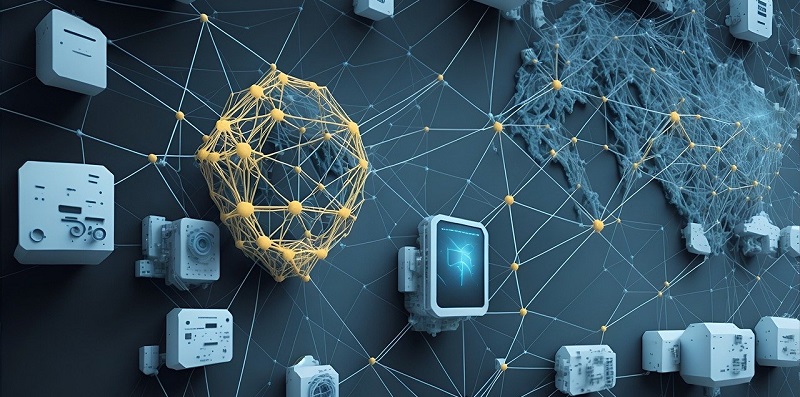The rapid advancement of artificial intelligence (AI) has revolutionized various industries, and network engineering is no exception. AI has emerged as a powerful tool in maximizing the potential of network engineering, enhancing network management, and optimizing network performance. This article delves into the integration of AI into network engineering and highlights the benefits it brings to the table.
AI-Driven Network Engineering
As AI technologies continue to evolve, their integration into network engineering has opened up exciting possibilities. The combination of network engineering principles with AI’s capabilities has given birth to AI-driven network engineering. This approach focuses on creating adaptable, resilient, and efficient networks that can dynamically respond to changing network conditions.
Creating Adaptable, Resilient, and Efficient Networks
AI-driven networks have the ability to adapt to changes in network traffic patterns seamlessly. By leveraging AI algorithms, these networks can automatically reroute data to avoid congestion and optimize data flow. This not only enhances network performance but also ensures an uninterrupted user experience.
Benefits of AI in Network Engineering
One of the defining features of AI-driven networks is their ability to adjust to changing network traffic conditions. By analyzing real-time data, AI algorithms can intelligently allocate network resources, prioritize critical network traffic, and optimize bandwidth usage. This enables networks to dynamically scale and handle increasing traffic without compromising performance.
Automatic Data Rerouting to Avoid Congestion
AI-driven networks possess the intelligence to identify potential congestion points and automatically reroute data to less congested paths. The algorithms constantly monitor network metrics and traffic patterns, ensuring smooth data transmission and minimizing latency. Consequently, network downtime and performance bottlenecks are significantly reduced.
Real-time Detection and Mitigation of Cyber Threats
The integration of AI in network engineering brings a significant boost to network security. AI algorithms can monitor network traffic in real-time and, through pattern recognition and anomaly detection, swiftly identify potential cyber threats. By proactively mitigating these threats, AI-driven networks provide enhanced network security and protect critical data.
Task Automation and Increased Productivity
AI-driven network engineering extensively automates routine tasks, enabling network engineers to focus on more strategic and complex challenges. Mundane activities such as network monitoring, configuration management, and troubleshooting can be automated, freeing up valuable time for engineers to innovate and tackle higher-value projects.
Reducing the Risk of Human Errors
Humans are prone to errors, especially when dealing with complex network configurations and large amounts of data. By leveraging AI-driven automation, the risk of human errors is significantly reduced. AI algorithms can identify potential misconfigurations, predictively pinpoint performance issues, and even suggest optimal network settings, minimizing the chance of human-induced network outages or vulnerabilities.
Enhancing Network Security
AI-driven networks provide continuous and real-time analysis of network traffic. By leveraging machine learning algorithms, these networks can identify unusual patterns or malicious activities, helping detect potential security breaches before they escalate. This proactive approach to network security improves threat detection and response times, minimizing the impact of cyberattacks.
Proactive Mitigation of Cyber Threats
Through AI-driven techniques, such as behavioural analysis and anomaly detection, network engineers can gain valuable insights into potential cyber threats, including zero-day attacks. By constantly learning from historical data and network behaviour, AI algorithms can predict and anticipate new threats, enabling network engineers to proactively implement preventive measures and ensure network security.
Insights into Network Performance
AI helps network engineers gain actionable insights into network performance by analyzing traffic patterns and data flow. These insights enable engineers to identify potential bottlenecks, optimize resource allocation, and proactively manage network capacity. Network performance can be continuously monitored and fine-tuned to meet the growing demands of applications and users.
Resource Allocation
By analyzing historical data and network trends, AI can predict future network needs. Network engineers can leverage these insights to effectively plan network growth, allocate resources optimally, and ensure a scalable and cost-effective network infrastructure. The ability to accurately predict and plan for future demands significantly enhances network efficiency and avoids unnecessary downtime or over-provisioning.
The Role of AI and Network Engineers
While AI offers undeniable benefits, it cannot replace the expertise and strategic decision-making of network engineers. AI serves as a valuable tool that enhances the capabilities of network engineers, enabling them to leverage AI insights to make informed decisions and optimize network performance. The symbiotic relationship between AI and network engineers fosters continuous innovation and ensures the evolution of network engineering practices.
Collaboration between Network Engineers and AI
The key to success in network engineering lies in the collaborative efforts between network engineers and AI-driven technologies. Network engineers bring their expertise, understanding of business needs, and the ability to interpret AI-driven insights, while AI complements their efforts with automation, intelligent analysis, and predictive capabilities. This collaboration ensures a robust, efficient, and secure network infrastructure that meets the evolving demands of modern business environments.
AI has emerged as a game-changer in network engineering by providing valuable capabilities to manage, optimize, and secure networks. AI-driven networks can adapt to changing network conditions, automate tasks, enhance security, and provide valuable insights into network performance. However, it is important to remember that AI is a tool that enhances the capabilities of skilled network engineers. The successful integration of AI into network engineering relies on the collaboration between AI technologies and the expertise of network engineers, ensuring an optimal and resilient network infrastructure for the future.

